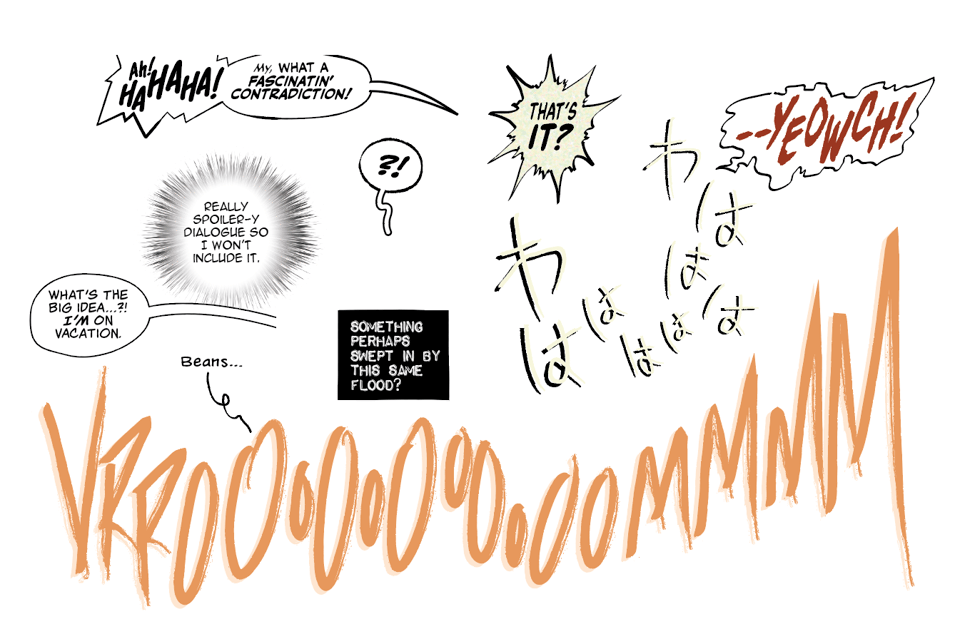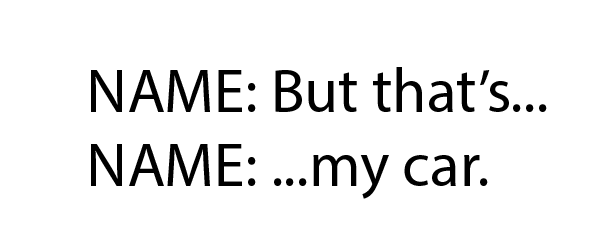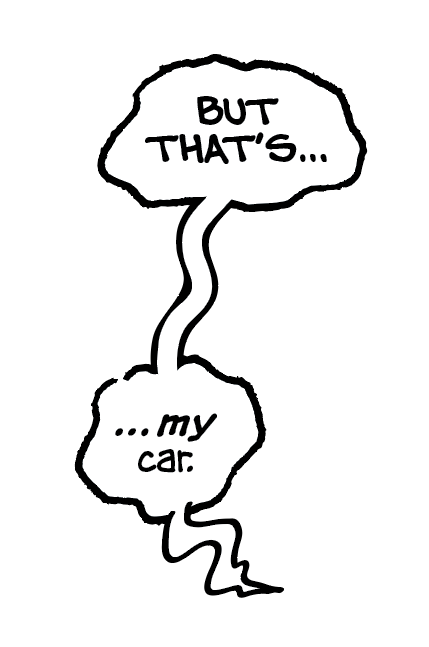The Lettering List 005 - What The £#@% is Dialogue?
Hello!
Welcome to the fifth edition of The Lettering List. I'm Hass, a professional comics letterer (and, if I can take a moment to say, a Ringo Award winning one as of last week!). In each edition of this newsletter, I throw up some lettering samples and then talk a little bit about the craft of lettering comic books.
Without much more fanfare, here's some balloons that have been across the desk in the past few weeks:

And what I wanted to talk about this time was dialogue. Namely, what the heck is it?!? Is it prose? Is it something else? How should it be treated? What are we supposed to do with it?!?
Dialogue is fascinating to me in comics, because it's a strange intersection between the written word and something that's more performative, aching to try and mimic a sound. This is all, of course, writer-depending. But ultimately, I don't feel (at least right now, in this instance) that comics dialogue should be held to the same grammatical and structural standards as typical prose. Even within prose there are stylistic exceptions to that, like Cormac McCarthy's lack of commas and quotation marks and things. So there's always flexibility when it comes to the art of the written language. But specifically within comics, the role of dialogue is extremely unique.
If we consider the closest neighbour to it, that of a film, dialogue is (typically) treated differently. Written dialogue in a film script is at least taught to be pretty clean. When it gets into the mouth of an actor, that can all change, of course. And it's in that where the dialogue is very literally brought to life. The final script of a film is not the way that the audience will receive the dialogue. There's a natural translation that happens from script to actor and director, and the heat of the moment in the acting, and whatever else. Pauses, clipping, intention, everything can change.
In comics, in a way, the written word in the script is very, very close to the way that the reader will receive it. So that clipping (making "No, nothing will get in my way!" into, for example, "No, nothin' will get my way!") needs to be done in the script. Similar for voices and accents, that needs to be done in the dialogue, because there is no actor to make those changes. And ultimately, if that kind of voice is important, it should be in the final script. Check out some of Declan Shalvey's comics set in Ireland for a sense of that. If you eradicate the stylistic changes for the sake of written word formality, you're losing something intentional in the art.
And getting to the role of lettering, there's an extra translation that's happening. A letterer's job, as far as I see it, is to take that dialogue and turn it into that strange combination of written word and performance. For example, this is a page in front of me today. The script says:

Now, you can already infer something by having it broken into two bits of dialogue and two balloons. But I think part of lettering is helping to create a visual representation of the acting, which for me looked like the below:

Selling, I hope, a quieter second balloon as someone looks on in disbelief at what's just happened to them. The wavy balloons and tail give it a slightly wobbly voice, someone upset or unsure. We also added the bold on ...MY, and I dropped the second balloon into lower case to help sell the effect.
And look, this is just my approach, and I'm sure there's plenty to argue that you don't need that, and two straight balloons showing the same dialogue might do the job. But hey, we're acting, right? No one ever tells Tom Hardy to only deliver lines as though he's practising the Meisner Technique, so whatever.
This isn't even getting into voices or genre or anything else like that, either. I'm purely thinking of how we might want to treat the idea of dialogue. This extends out to sound effects, or sounds within balloons, like KOFF being a better word than COUGH in a lot of cases (the hard K looks more aggressive, COUGH or KAFF might work for a smaller cough).
Anyway, something to think about there. It's what I've been thinking about today, too!
Hass
Comics featured in the Lettering List this edition: Witcher-Wild Animals, Slow Burn, Harley Quinn, Drive Like Hell, Batman: City of Madness, [Unannounced project], Bad Dream, 'Twas the Mite Before Christmas.
Sneaky plug for my upcoming graphic novel, THE UNLIKELY STORY OF FELIX & MACABBER - created with Juni Ba. It's available to pre-order now here: https://www.amazon.co.uk/Unlikely-Story-Felix-Macabber/dp/1506738222